
- Shandong Loyal Industrial Co.,Ltd.
- SHORT-CUT PASTA PRODUCTION LINE LONG-CUT PASTA PRODUCTION LINE INSTANT PASTA PRODUCTION LINE
Home> Application> Unleashing Innovation: Fully Automated Systems for High-Efficiency Macaroni Production

Unleashing Innovation: Fully Automated Systems for High-Efficiency Macaroni Production
Unleashing Innovation: Fully Automated Systems for High-Efficiency Macaroni Production
The macaroni pasta production line technology of Shandong Luoya Industrial Co., Ltd. has introduced advanced technologies from FEN and Lineapasta .
In the dynamic landscape of macaroni production, the adoption of fully automated systems stands as a revolutionary leap towards unparalleled efficiency. Embracing technological innovations has become pivotal for the macaroni manufacturing sector, as it seeks to meet the demands of a rapidly evolving market. This section will delve into the transformative journey propelled by the integration of automated systems, emphasizing their profound impact on the efficiency of macaroni production.
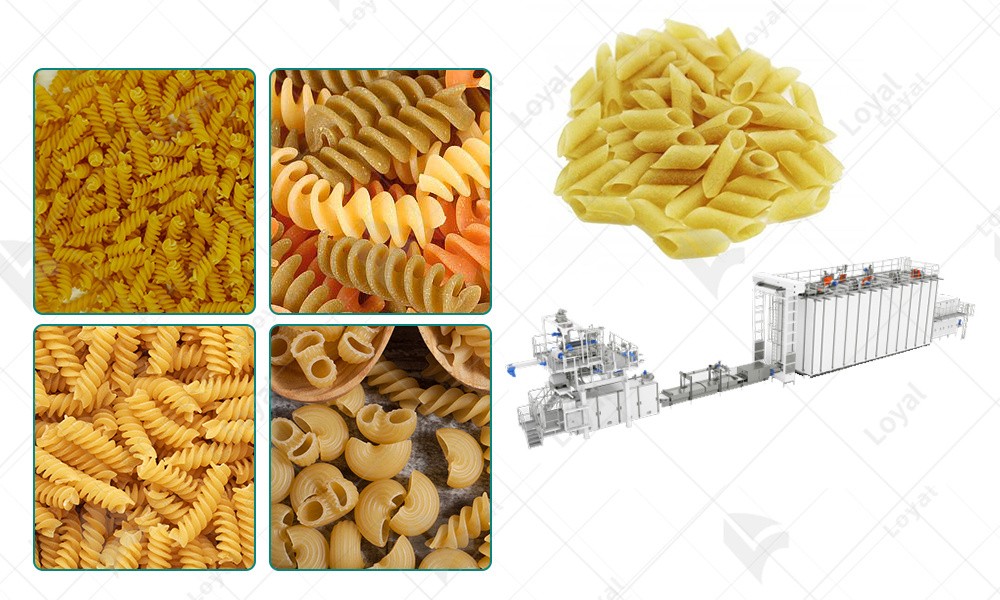
Evolution of Macaroni Production
The journey of macaroni production has witnessed a remarkable evolution, progressing from traditional methods to the current era of full automation. In the early stages, artisans crafted macaroni manually, relying on their expertise to achieve the desired shapes and textures. As demand grew, the limitations of manual production became apparent, prompting the exploration of mechanized processes.
With the advent of industrialization, the macaroni production landscape underwent a significant transformation. Mechanical extrusion machines were introduced, streamlining the shaping process and increasing production efficiency. However, these early machines still required substantial human intervention, limiting the potential for mass production.
The breakthrough came with the integration of computerized technologies in the mid-20th century. Automated extrusion systems marked a turning point, allowing for precise control over the macaroni-making process. This marked the beginning of the automation journey, setting the stage for the high-efficiency systems in use today.
Key Components of Fully Automated Systems
Fully automated systems in macaroni production consist of several key components, each playing a vital role in ensuring efficiency and quality. Bold extrusion technologies stand out as the backbone of automation, enabling the precise creation of macaroni shapes. These advanced extrusion systems leverage computerized controls to regulate factors such as pressure, temperature, and shaping speed, resulting in uniform and consistent products.
Computerized control systems extend beyond extrusion, overseeing the entire production line. These intelligent systems optimize various parameters, ensuring seamless coordination between different stages. Smart sensors are employed to monitor and adjust conditions in real-time, further enhancing the precision and reliability of the automated process.

Innovative mixing processes have also become integral to fully automated systems. Automated mixing ensures a homogeneous blend of raw materials, guaranteeing uniform quality across batches. The use of cutting-edge mixing technologies adds an extra layer of efficiency to the production line, contributing to the overall excellence of macaroni products.
Advantages of Full Automation
The adoption of fully automated systems in macaroni production brings forth a plethora of advantages that redefine the industry's standards. Increased precision in shaping allows manufacturers to produce macaroni with unparalleled consistency, meeting the highest quality standards. The use of automated extrusion systems ensures that every macaroni piece maintains the exact specifications required, enhancing the overall product appeal.
Consistency in product quality is a hallmark of full automation. Automated systems eliminate the variability introduced by human factors, resulting in macaroni products that consistently meet consumer expectations. The reduction of human error contributes to a higher standard of quality control, positioning automated macaroni production as a benchmark for excellence.
Moreover, elevated production rates are achieved through full automation. The efficiency of automated processes allows for increased output without compromising product quality. This scalability is particularly crucial in meeting the growing demands of the market while maintaining a competitive edge.
Real-world examples from industry leaders such as San Giorgio, Great Value, Ronzoni, Colavita, and La Molisana underscore these advantages. These brands have successfully harnessed the benefits of full automation, showcasing how it not only improves efficiency but also elevates the overall quality of macaroni production.
Overcoming Implementation Challenges
As with any groundbreaking shift, the implementation of fully automated systems in macaroni production is not without challenges. This section will address the common hurdles faced by manufacturers, ranging from initial investment costs to workforce adjustments. Strategies and solutions will be explored to guide the industry through the practical aspects of transitioning to full automation, ensuring a smooth and successful adaptation.
Sustainability in Automated Macaroni Production
The quest for sustainability is a driving force behind the integration of fully automated systems in macaroni production. From energy-efficient practices to the reduction of carbon footprints, this exploration will shed light on how automation aligns with environmentally conscious manufacturing. Insights from industry experts will underline the significant strides made towards long-term sustainability.
Future Trends and Innovations
Looking ahead, the article will explore the future trends and innovations shaping the trajectory of macaroni production. From emerging technologies to potential advancements in automation, this section will provide a forward-looking perspective. Expert opinions will offer valuable insights into the evolving landscape and the industry's commitment to continuous improvement.

Conclusion
In conclusion, the integration of fully automated systems has unleashed a wave of innovation, transforming macaroni production into a high-efficiency endeavor. This section will synthesize the key findings, emphasizing how technological innovation has propelled the industry forward. The importance of continued innovation will be reiterated as macaroni production embraces a future defined by efficiency and sustainability.
FAQs: Common Inquiries about Automated Macaroni Production
Q1: How does fully automated macaroni production contribute to increased precision?
A1: Fully automated systems, utilizing advanced extrusion technologies and computerized control systems, ensure precise control over factors like temperature and production speed. This results in consistent macaroni shapes and textures, meeting exact specifications with every batch.
Q2: What are the primary advantages of adopting fully automated systems in macaroni production?
A2: The advantages are manifold, including increased precision, enhanced consistency in product quality, and elevated production rates. Automation allows for a streamlined and efficient manufacturing process, reducing the margin of error and meeting high production demands.
Q3: Can you provide examples of macaroni brands that have successfully implemented fully automated systems?
A3: Certainly, leading brands such as San Giorgio, Great Value, Ronzoni, Colavita, and La Molisana have embraced fully automated systems in their production processes. Their success stories serve as benchmarks, showcasing the transformative impact of automation on efficiency.
Q4: What challenges can manufacturers face during the implementation of fully automated systems?
A4: Common challenges include initial investment costs, the need for skilled personnel, and adjustments to the workforce. However, strategies such as phased implementation and comprehensive training programs can help mitigate these challenges.
Q5: How does the integration of renewable energy sources contribute to sustainability in automated macaroni production?
A5: Integrating renewable energy sources, such as solar and wind power, reduces the reliance on traditional energy grids. This strategic shift aligns with sustainability goals, minimizing the environmental impact of macaroni production and promoting eco-friendly practices.
Q6: What future trends and innovations can we expect in the field of automated macaroni production?
A6: The future holds promise for emerging technologies, potential advancements in automation, and an increased focus on sustainability. Industry experts anticipate continuous innovation, shaping a future where macaroni production is not only efficient but also environmentally conscious.
Q7: How can manufacturers ensure a smooth transition to fully automated macaroni production?
A7: Successful transitions involve thorough planning, phased implementation, and comprehensive training programs for the workforce. Learning from the experiences of industry leaders can provide valuable insights for manufacturers embarking on this transformative journey.
Contact Us

- Shandong Loyal Industrial Co.,Ltd.
- Telephone+86 13176674591
- Email[email protected]
- WhatsApp+86 13176674591
- WeChat13176674591
- AddressC623, Jiahui Global Plaza, No. 548, Beiyuan Street, Tianqiao District, Jinan City, Shandong Province
- Factory AddressADD -300m North of Zhangxia Industrial Park, Binhe Road, Zhangxia Town, Changqing District, Jinan
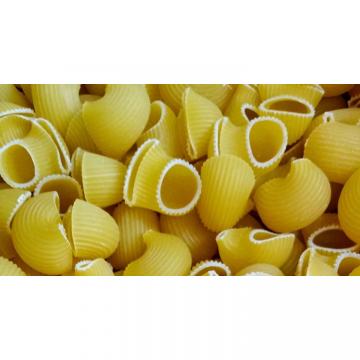

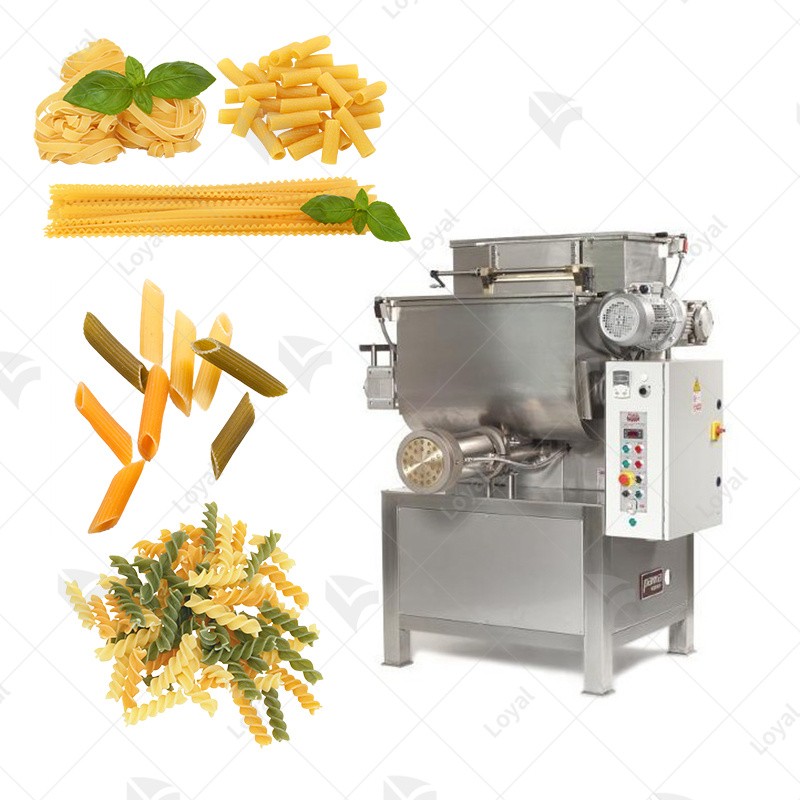

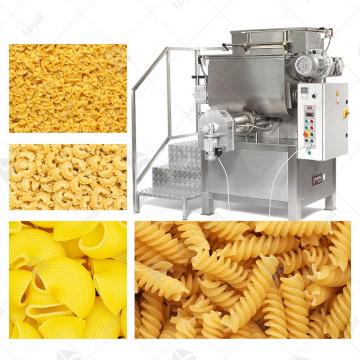
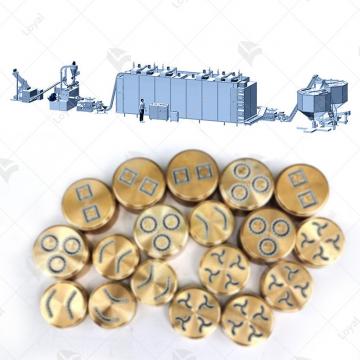 Macaroni Pasta Production Line
Macaroni Pasta Production Line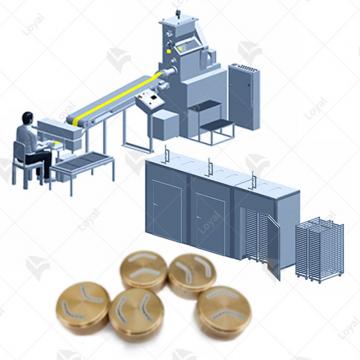 Combined Automatic Pasta Sheeter
Combined Automatic Pasta Sheeter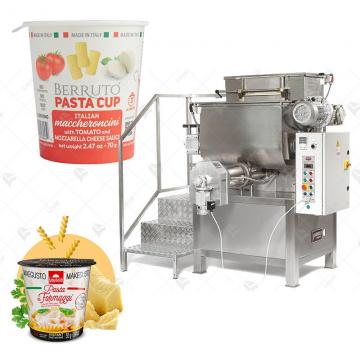 INSTANT PASTA CUP PRODUCTION LINE
INSTANT PASTA CUP PRODUCTION LINE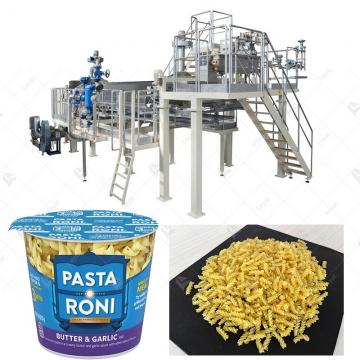 Instant Pasta Production Line
Instant Pasta Production Line